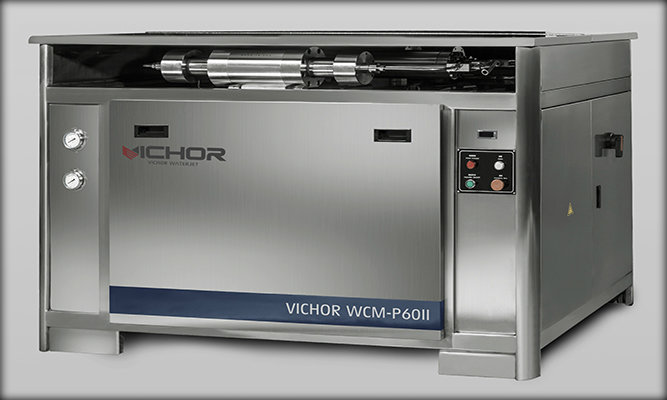Pump Technology
The pump is the heart of the waterjet system. The pump pressurizes the water and delivers it continuously so that a cutting head can then turn that pressurized water into a supersonic waterjet stream.

Two types of pump can be used for waterjet applications — an intensifier based pump and a direct drive based pump.
Direct Drive Pump
The direct drive pump operates in the same manner as a low-pressure “pressure washer” that you may have used to pressure wash a house or deck prior to repainting.
It is a triplex pump that gets the movement of the three plungers directly from the electric motor.
These pumps are gaining acceptance in the waterjet industry due to their simplicity.
At the time of this writing, direct drive pumps can deliver a maximum continuous operating pressure 10 to 25% lower than intensifier pumps units (20k to 60k for direct drive, 40k to 94k for intensifiers).
Though direct drive pumps are used in some industrial applications, the vast majority of all ultra-high pressure pumps in the waterjet world today are intensifier based.
Intensifier Pump
Two fluid circuits exist in a typical intensifier pump, the water circuit and the hydraulic circuit.
The water circuit consists of the inlet water filters, booster pump, intensifier, and shock attenuator.
Ordinary tap water is filtered by the inlet water filtration system – usually comprising of a 1 and a 0.45 micron cartridge filter.
The filtered water then travels to the booster pump, where the inlet water pressure is maintained at approximately 90 psi – ensuring the intensifier is never “starved for water.”
The filtered water is then sent to the intensifier pump and pressurized to up to 94,000 psi.
Before the water leaves the pump unit to travel through the plumbing to the cutting head, it first passes through the shock attenuator.
This large vessel dampens the pressure fluctuations to ensure the water exiting the cutting head is steady and consistent. Without the attenuator, the water stream would visibly and audibly pulse, leaving marks on the material being cut.
The hydraulic circuit consists of an electric motor (25 to 200 HP), hydraulic pump, oil reservoir, manifold, and piston biscuit/plunger. The electric motor powers the hydraulic pump.
The hydraulic pump pulls oil from the reservoir and pressurizes it to 3,000 psi. This pressurized oil is sent to the manifold where manifold’s valves create the stroking action of the intensifier by sending hydraulic oil to one side of the biscuit/plunger assembly, or the other.
The intensifier is a reciprocating pump, in that the biscuit/plunger assembly reciprocates back and forth, delivering high-pressure water out one side of the intensifier while low-pressure water fills the other side. The hydraulic oil is then cooled during the return back to the reservoir.
